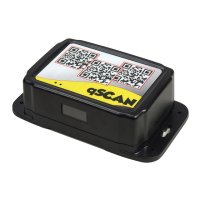Qscan User’s Guide Version 1.4
Page 11
Barcode masking provides a way of extracting certain portions of a barcode for
processing. The masking operations include selecting up to 2 substrings from the
barcode, and also adding prex and sufx characters. You program in a mask when
you do not want to process all of the data from a barcode, but only a portion of it.
When a barcode is read, the reader checks to see if a mask should be applied.
Masks are applied based on the barcode symbology, and length of the barcode.
For example, you can set up a mask to work only on 10 character code39
barcodes. If a code39 barcode is not 10 characters, you can elect to ignore it (don’t
process) or pass the barcode through without masking (pasthru mode). It is also
possible to program a mask to work on all lengths of a specic symbology.
After masking, the barcode data will look like this:
prex character + substring 1 + inter character + substring 2 + sufx
character
The mask needs to include only 1 of the above items.
A total of 10 masks can be programmed in the reader. The masks can be for
different symbologies, or all for the same symbology.
When programming a mask, 3 commands need to be processed by the reader (see
page 21).
For wiegand output Qscans, the masking is performed prior to the wiegand
extractions which create the wiegand output (see page 48).
Barcode Masking
INTRODUCTION

